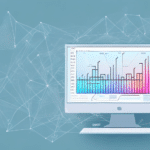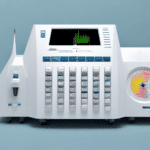Top 10 Volume Analyzers for E-Commerce in 2023
As e-commerce continues to experience rapid growth, businesses are increasingly seeking tools to optimize their operations and boost sales. A key tool in this endeavor is a volume analyzer, which helps businesses interpret their data to maximize profits. In this article, we'll delve into the top 10 volume analyzers for e-commerce in 2023, exploring their features, benefits, and real-world applications.
Understanding the Importance of Volume Analyzers in E-Commerce
E-commerce is driven by a multitude of metrics: sales figures, conversion rates, click-through rates, and more. To thrive in this competitive landscape, businesses must analyze these numbers to make informed decisions. Volume analyzers are essential tools that help businesses comprehend their data, identify trends, and optimize operations for enhanced performance.
Real-Time Data Insights
One of the significant advantages of volume analyzers is their ability to provide real-time data. This allows businesses to swiftly identify issues or opportunities and adjust strategies accordingly. For instance, if a product isn't performing well, a volume analyzer can pinpoint the problem, enabling adjustments in marketing strategies or pricing.
Forecasting and Planning
Volume analyzers also aid in forecasting future trends, ensuring businesses stay ahead of the curve. By analyzing historical data, businesses can anticipate market shifts and plan their inventory, marketing, and sales strategies effectively.
Optimizing Your E-Commerce Strategy with Volume Analyzers
The benefits of volume analyzers extend to various aspects of e-commerce strategy optimization:
- Comprehensive Metric Tracking: Track sales volume, revenue, and profit margins in real-time to gain a holistic view of operations.
- Trend Identification: Spot emerging trends and adjust strategies to capitalize on them.
- Operational Efficiency: Automate data collection and analysis to save time and resources, allowing focus on strategic initiatives.
By leveraging these capabilities, businesses can make informed decisions that drive growth and profitability.
Key Features to Look for in a Volume Analyzer
When selecting a volume analyzer for your e-commerce business, consider the following essential features:
- Integration Capabilities: The tool should seamlessly integrate with your existing e-commerce platforms, such as Shopify, Magento, or WooCommerce, to aggregate data from various sources.
- Data Processing Speed: Ability to handle large datasets efficiently to ensure timely insights.
- Customizable Reporting: Flexible reporting options that allow you to tailor reports to your specific business needs.
- Predictive Analytics: Advanced features like predictive analytics to forecast future trends and behaviors.
- User-Friendly Interface: An intuitive interface that makes data analysis accessible to all team members.
These features ensure that the volume analyzer can meet the dynamic needs of your e-commerce business.
Criteria for Selecting the Top 10 Volume Analyzers in 2023
To compile the list of the top 10 volume analyzers for e-commerce in 2023, we employed a comprehensive set of criteria:
- Ease of Use: User-friendly interfaces and intuitive navigation.
- Data Accuracy: Precision in data collection and analysis.
- Integration Capabilities: Compatibility with various e-commerce platforms and tools.
- Customer Support: Availability of reliable and responsive customer service.
- Pricing: Competitive and scalable pricing models suitable for businesses of all sizes.
- User Reviews: Positive feedback and high ratings from existing users.
- Vendor Reputation: Established reputation and credibility in the industry.
These criteria ensure that the selected tools offer the best combination of features, performance, and value for e-commerce businesses.
Top 10 Volume Analyzers for E-Commerce: Comprehensive Review and Comparison
Below is an in-depth review of the top 10 volume analyzers for e-commerce in 2023, highlighting their features, pricing, and unique benefits.
1. Google Analytics
Google Analytics remains a staple for e-commerce businesses, offering robust features like website traffic tracking, conversion rate analysis, custom reporting, audience segmentation, and remarketing capabilities.
Pricing: Free for basic features, with Google Analytics 360 available for enterprise-level needs.
2. Mixpanel
Mixpanel focuses on user behavior analytics, making it ideal for businesses with a strong mobile presence. It offers event tracking, user engagement analysis, and push notifications to enhance user interaction.
Pricing: Free tier available, with paid plans based on data points and features.
3. Kissmetrics
Kissmetrics excels in cohort analysis and funnel tracking, enabling businesses to optimize their sales funnels and improve conversion rates. It also offers A/B testing for more refined marketing strategies.
Pricing: Subscription-based pricing with various tiers tailored to business size.
4. Woopra
Woopra provides real-time customer analytics, funnel analysis, and behavioral segmentation. It integrates seamlessly with platforms like Shopify, Magento, and WooCommerce.
Pricing: Offers a free tier with basic features and premium plans for advanced needs.
5. Heap Analytics
Heap Analytics automates the tracking of user interactions across websites and mobile apps. It features cohort analysis, funnels, and conversion tracking without the need for manual event tagging.
Pricing: Free tier available, with paid plans based on usage and features.
6. Segment
Segment serves as a data integration platform, unifying user data from multiple sources. It offers features like unified customer profiles, data warehousing, and integration with over 300 tools and platforms.
Pricing: Tiered pricing based on monthly tracked users and features.
7. Amplitude
Amplitude is designed for in-depth user behavior tracking, offering funnel analysis, cohort analysis, and integrations with platforms like Shopify and Magento.
Pricing: Free for basic features, with premium plans for advanced analytics.
8. QuickBooks Commerce
QuickBooks Commerce is an integrated e-commerce platform offering order management, inventory tracking, and customer management. It integrates with volume analyzers like Google Analytics to provide comprehensive insights.
Pricing: Subscription-based pricing with multiple tiers to suit different business sizes.
9. Looker
Looker is a business intelligence platform offering customizable dashboards, interactive reports, and advanced data visualizations, making data analysis intuitive and actionable.
Pricing: Customized pricing based on business needs and scale.
10. Sisense
Sisense offers advanced analytics, data visualization, and seamless integration with e-commerce platforms like Shopify and Magento, empowering businesses to derive meaningful insights from their data.
Pricing: Custom pricing tailored to business requirements and data volumes.
Streamlining Data Analysis with Volume Analyzers
Analyzing vast amounts of data can be challenging and time-consuming. Volume analyzers simplify this process by automating data collection and analysis, presenting insights through custom dashboards, real-time alerts, and automated reporting. This enables managers to stay informed and make swift, data-driven decisions without getting overwhelmed by the details.
The Benefits of Investing in a Quality Volume Analyzer
Investing in a high-quality volume analyzer offers numerous advantages for your e-commerce business:
- Deeper Data Understanding: Gain comprehensive insights into sales and marketing strategies.
- Operational Efficiency: Automate repetitive tasks, freeing up resources for strategic initiatives.
- Competitive Edge: Identify trends and patterns that competitors might overlook, positioning your business for long-term success.
By leveraging data effectively, businesses can drive growth, enhance customer experiences, and maintain a competitive advantage in the dynamic e-commerce landscape.
Real-Life Use Cases and Success Stories
Volume analyzers have proven instrumental in driving e-commerce success. Here are some real-life examples:
- Increased Conversion Rates: An e-commerce retailer utilized Mixpanel to track user behavior across their website and mobile app. By identifying drop-off points and optimizing those pages, they achieved a 30% increase in conversion rates.
- Enhanced Email Campaigns: A business employed Kissmetrics to monitor user engagement with their email campaigns. By optimizing subject lines and calls-to-action, they boosted email open rates and click-through rates by 50%.
These examples demonstrate how volume analyzers can unlock valuable insights, leading to substantial improvements in sales and customer engagement.
Emerging Trends in Volume Analyzers for E-Commerce
The realm of volume analyzers is continuously evolving, with several key trends shaping the future:
- Artificial Intelligence and Machine Learning: AI-driven analyzers automate data analysis and uncover hidden patterns, providing deeper insights.
- Real-Time Data Processing: The emphasis on real-time data allows businesses to make quicker decisions and respond promptly to market changes.
- Enhanced Data Privacy: With increasing data privacy regulations, volume analyzers are incorporating robust security measures to protect user data.
Staying abreast of these trends ensures that businesses can leverage the latest technologies to enhance their data analysis capabilities.
Choosing the Right Volume Analyzer for Your E-Commerce Business
Selecting the appropriate volume analyzer involves considering several critical factors:
- Business Needs and Goals: Identify what you aim to achieve with the analyzer, whether it's improving conversion rates, understanding user behavior, or optimizing marketing campaigns.
- Feature Set: Ensure the tool offers the necessary features, such as real-time analytics, customizable reporting, and integration capabilities.
- Scalability: Choose a tool that can grow with your business, handling increasing data volumes and more complex analyses.
- Budget: Assess the pricing structure to ensure it aligns with your budget while providing the necessary features and support.
- User Reviews and Support: Consider feedback from existing users and the quality of customer support offered by the vendor.
By thoughtfully evaluating these factors, you can select a volume analyzer that best fits your e-commerce business needs.
Conclusion: Empowering Your E-Commerce Business with the Right Volume Analyzer
E-commerce is a dynamic and competitive field, where data-driven decisions are crucial for success. Investing in a quality volume analyzer equips businesses with the tools needed to interpret complex data, identify trends, and optimize strategies effectively.
In this article, we've reviewed the top 10 volume analyzers for e-commerce in 2023, each offering unique features and benefits tailored to diverse business needs. By choosing the right tool, you can unlock valuable insights, drive growth, and maintain a competitive edge in the ever-evolving e-commerce landscape.
As you consider integrating a volume analyzer into your operations, prioritize tools that align with your specific goals, offer scalability, and provide robust support. With the right analysis tool in place, your e-commerce business is well-positioned for sustained success and growth.




















